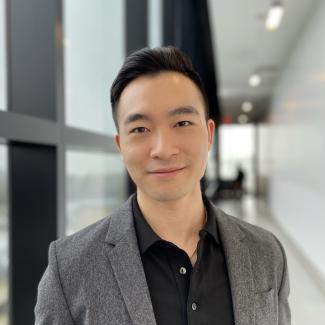What accomplishments are you most proud of?
I am particularly proud of my achievements in educational leadership. Transitioning into academia from clinical practice, I engaged in a project developing educational resources to support students transitioning from the classroom to practical training. Following this experience, I co-led the PRIDE-Rx initiative with Tristan Lai and Tim Lim, a three-year initiative to embed SOGI education across the Entry-to-Practice PharmD program. Witnessing the extensive support and positive feedback our work has garnered (both locally and nationally) has been incredibly rewarding.
Who has been the biggest influence in your career?
The two most significant influences in my career have been my mentors and bosses, Nelson Costa, BSc(Pharm)’95 and Janice Yeung, BSc(Pharm)’95, PharmD’02. Nelson played a crucial role in my early career, encouraging me to start my community practice on the Sunshine Coast. This decision fast-tracked my career, opening doors to management and leadership roles.
Janice, my current boss, has been instrumental in my growth as a lecturer in the academic space. She recognized my potential in academia and cultivated an environment where I could boldly pursue my interests in teaching and educational leadership.
What is the most important step pharmacists can take to ensure a safe and welcoming environment for 2SLGBTQIA+ individuals?
As pharmacists, we serve diverse communities, and it's vital to use inclusive, non-assumptive language with all patients. Pay attention to how they refer to their bodies and describe their relationships, and mirror that language. This approach builds trust, addressing the long-standing gaps in how medical institutions have historically mistreated 2SLGBTQIA+ individuals.
What are common missteps that health-care providers make when treating 2SLGBTQIA+ patients, and how can they improve?
First, unlearning the deeply embedded habit of operating within a cis-heteronormative framework is challenging. Our instinct to make assumptions about others is natural and overcoming these biases requires conscious effort and consistent practice to foster more inclusive thinking. Second, there's a misconception that 2SLGBTQIA+ individuals conform to specific appearances, behaviours, or mannerisms. It is important to recognize that you cannot determine someone's identities simply based on their looks or actions. Lastly, mistakes will happen along the way, and that's okay—practice and exposure to 2SLGBTQIA+ media, literature, and arts can improve communication and foster inclusive thinking.
Is there anything else you’d like to share about your career?
My journey to get to my current position was far from smooth or linear, and I think it is important to share that with others. It took me four attempts to get into pharmacy school, and during that time, I often felt embarrassed and lost as I watched my peers progress. The process was tough and humbling. Experiencing failure and setbacks is difficult but it is important not to let them define you. Success doesn’t require following a traditional, linear path dictated by societal expectations.
